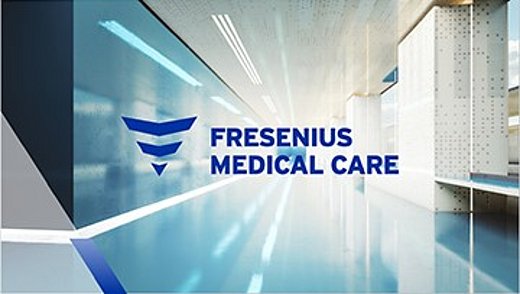Fresenius Medical Care delivers strong organic revenue growth and double-digit operating income growth in the second quarter of 2025 – freseniusmedicalcare.com

Quarterly Performance Report: Fresenius Medical Care Q2 2025
Executive Summary: Aligning Financial Performance with Sustainable Development Goals
This report details the financial and operational performance of Fresenius Medical Care for the second quarter (Q2) and first half (H1) of 2025. The company demonstrates a strong commitment to its strategic plan, achieving significant financial growth while advancing key United Nations Sustainable Development Goals (SDGs). Performance highlights a direct contribution to SDG 3 (Good Health and Well-being) through the provision of essential renal care services and products. Furthermore, strategic efficiencies and robust financial growth underscore a commitment to SDG 8 (Decent Work and Economic Growth) and SDG 9 (Industry, Innovation, and Infrastructure).
Strategic Execution and Contribution to Sustainable Innovation (SDG 9 & SDG 12)
FME25+ Transformation Program
The FME25+ transformation program continues to drive operational efficiency, aligning with SDG 12 (Responsible Consumption and Production) by optimizing resource use. Key achievements in Q2 2025 include:
- Sustainable Savings: EUR 58 million in additional sustainable savings were realized.
- Program Costs: Related one-time costs amounted to EUR 53 million.
- Full-Year Target: The company confirms its target of EUR 180 million in additional annual savings for 2025, contributing to a total of EUR 1,050 million by the end of 2027.
Portfolio Optimization and Resource Management
In line with responsible corporate management and a focus on core operations, the company is executing its portfolio optimization plan. This involves exiting non-core and margin-dilutive assets, a strategy that supports sustainable long-term growth. These actions are estimated to negatively impact full-year 2025 Group revenue growth by approximately one percent.
Financial Performance Analysis: Driving Economic Growth (SDG 8)
Group Revenue Performance
The company’s revenue growth reflects its stable contribution to the global economy.
- Q2 2025 Group Revenue: Increased by 1% to EUR 4,792 million (+7% organic growth).
- H1 2025 Group Revenue: Increased by 2% to EUR 9,673 million (+6% organic growth).
Operating Income and Margin Expansion
Significant growth in operating income demonstrates strong financial health and sustainable business practices, a core tenet of SDG 8.
- Q2 2025 Operating Income (Excluding Special Items): Increased by 9% to EUR 476 million, with the margin expanding to 9.9%.
- H1 2025 Operating Income (Excluding Special Items): Increased by 11% to EUR 933 million, with the margin expanding to 9.6%.
Net Income and Earnings Per Share (EPS)
Profitability metrics showed substantial year-over-year improvement.
- Q2 2025 Net Income (Excl. Special Items): Increased by 26% to EUR 268 million.
- Q2 2025 Basic EPS (Excl. Special Items): Increased by 26% to EUR 0.91.
- H1 2025 Net Income (Excl. Special Items): Increased by 28% to EUR 514 million.
- H1 2025 Basic EPS (Excl. Special Items): Increased by 28% to EUR 1.75.
Segment Analysis: Enhancing Global Health and Well-being (SDG 3)
Care Delivery: Expanding Access to Essential Healthcare
The Care Delivery segment is the primary vehicle for the company’s contribution to SDG 3, providing life-sustaining treatments to patients worldwide. As of June 30, 2025, Fresenius Medical Care treated 300,339 patients across 3,676 clinics. In Q2 2025, U.S. same market treatment growth was flat, impacted by a severe flu season, but this was partially offset by an accelerated number of new patient starts.
- Q2 Revenue: EUR 3,381 million (+4% organic growth).
- Q2 Operating Income (Excl. Special Items): EUR 378 million, with a margin of 11.2%.
Value-Based Care: Innovating for Better Health Outcomes
The establishment of Value-Based Care as a standalone segment highlights a commitment to innovative healthcare models that improve patient outcomes, directly supporting SDG 3 and SDG 9. This segment experienced exceptional growth driven by expanded contracts.
- Q2 Revenue: Grew by 22% to EUR 506 million (+28% organic growth).
- Key Driver: A significant increase in the number of member months.
Care Enablement: Supporting Healthcare Infrastructure
This segment provides the critical products and technology that form the foundation of renal care infrastructure, contributing to both SDG 3 and SDG 9.
- Q2 Revenue: EUR 1,348 million (+3% organic growth).
- Q2 Operating Income (Excl. Special Items): Increased significantly by 76% to EUR 117 million, with the margin improving to 8.7%.
Cash Flow and Financial Health: Ensuring Long-Term Sustainability
Operating and Free Cash Flow
Strong cash flow generation underscores the company’s financial stability, enabling continued investment in its mission to provide quality healthcare.
- Q2 Operating Cash Flow: Improved by 75% to EUR 775 million.
- Q2 Free Cash Flow: Increased by 117% to EUR 628 million.
Debt Reduction and Leverage
Prudent financial management is evident in the continued reduction of debt, which strengthens the company’s long-term sustainability and its capacity to contribute to economic stability (SDG 8).
- Total Net Debt: Reduced to EUR 9,315 million.
- Net Leverage Ratio: Improved to 2.7x.
Corporate Outlook and Global Impact
2025 Outlook Confirmed
Fresenius Medical Care confirms its fiscal year 2025 outlook:
- Revenue Growth: Expected to be in a positive low-single-digit percent range.
- Operating Income Growth (Excl. Special Items): Expected to be in a high-teens to high-twenties percent range.
Global Workforce and Societal Contribution
The company’s global presence provides significant societal benefits. By employing 112,445 people worldwide, Fresenius Medical Care contributes to SDG 8 (Decent Work and Economic Growth) through stable employment, while its core mission remains firmly rooted in advancing SDG 3 (Good Health and Well-being) for renal patients globally.
SDGs Addressed in the Article
-
SDG 3: Good Health and Well-being
The core business of Fresenius Medical Care, as described in the article, is directly aligned with SDG 3. The company is the “world’s leading provider of products and services for individuals with renal disease.” The article details its operations in providing essential healthcare, such as treating “300,339 patients in 3,676 dialysis clinics worldwide,” which contributes to ensuring healthy lives and promoting well-being for people suffering from non-communicable diseases.
-
SDG 8: Decent Work and Economic Growth
The article addresses SDG 8 by highlighting the company’s role as a major global employer and its focus on sustained economic growth. It states that the company had “112,445 employees (headcount) globally.” Furthermore, the detailed financial reporting on revenue growth, operating income, and strategic programs like “FME25+” demonstrates a focus on economic productivity and business sustainability, which are central to this goal.
-
SDG 9: Industry, Innovation, and Infrastructure
SDG 9 is relevant through the company’s development of specialized health infrastructure and its innovation in healthcare delivery. The article mentions a global network of “3,676 dialysis clinics,” which constitutes resilient health infrastructure. The reporting on “Value-Based Care” as a standalone segment that “grew by 22%” and the mention of “virtual power purchase agreements” point towards innovation in service models and efforts to adopt more sustainable industrial processes.
Identified SDG Targets
-
SDG 3: Good Health and Well-being
-
Target 3.4: Reduce by one-third premature mortality from non-communicable diseases through prevention and treatment.
The article shows a direct contribution to this target. Renal disease is a major non-communicable disease (NCD), and Fresenius Medical Care provides life-sustaining dialysis treatments. The text notes the impact of external health crises on its patient population, stating a “severe flu season… resulted in significantly increased mortality,” which underscores the critical role the company’s services play in managing NCDs and preventing premature death.
-
Target 3.8: Achieve universal health coverage, including access to quality essential health-care services.
The company’s operations contribute to this target by providing essential healthcare services on a global scale. The article mentions providing “dialysis treatments for approx. 300,000 patients” and being the “leading provider of dialysis products such as dialysis machines or dialyzers.” The discussion of “Value-Based Care” and its growth also reflects an innovative approach to delivering quality, financially sustainable healthcare.
-
-
SDG 8: Decent Work and Economic Growth
-
Target 8.2: Achieve higher levels of economic productivity through diversification, technological upgrading and innovation.
The article highlights the company’s efforts to enhance economic productivity through strategic initiatives. The “FME25+ transformation program” is designed to deliver “additional sustainable savings.” The creation of “Value-Based Care” as a new, growing segment and the focus on “Care Enablement” demonstrate a strategy of innovation and focus on high-value services within the healthcare sector.
-
Target 8.5: Achieve full and productive employment and decent work for all.
The article provides a clear metric related to employment, stating the company “had 112,445 employees (headcount) globally.” This shows its role as a significant global employer. Additionally, the mention of “higher personnel expenses due to planned merit increases” suggests a commitment to employee compensation, which is an aspect of decent work.
-
-
SDG 9: Industry, Innovation, and Infrastructure
-
Target 9.1: Develop quality, reliable, sustainable and resilient infrastructure.
Fresenius Medical Care’s network of “3,676 dialysis clinics worldwide” represents a significant and specialized form of health infrastructure. This network is essential for providing reliable and accessible treatment to patients with renal disease, thereby supporting human well-being on a global scale.
-
Target 9.4: Upgrade infrastructure and retrofit industries to make them sustainable, with increased resource-use efficiency and greater adoption of clean and environmentally sound technologies.
The article implies progress toward this target by mentioning that “virtual power purchase agreements contributed EUR 15 million.” This indicates an investment in cleaner energy sources for its operations. The “FME25+ transformation program” aimed at achieving “sustainable savings” also suggests a drive towards greater resource-use efficiency, a key component of making industries more sustainable.
-
Indicators for Measuring Progress
-
For SDG Target 3.4 (Reduce NCD mortality):
- Number of patients receiving treatment for NCDs: The article explicitly states that Fresenius Medical Care “treated 300,339 patients.” This is a direct indicator of the scale of treatment being provided for renal disease.
- Implied – Mortality rate from NCDs: The article’s reference to “significantly increased mortality” due to a severe flu season implies that mortality rates are a key performance metric tracked by the company for its patient population.
-
For SDG Target 3.8 (Universal health coverage):
- Coverage of essential health services: The number of “3,676 dialysis clinics” and “300,339 patients” serve as direct indicators of the reach and coverage of the company’s essential health services. The provision of “dialysis products such as dialysis machines or dialyzers” is another indicator of service availability.
-
For SDG Target 8.2 (Economic productivity and innovation):
- Revenue and operating income growth: The article is replete with financial indicators such as “Group revenue increased by 1%” and “Operating income excluding special items increased by 9%,” which measure economic performance.
- Growth in innovative business segments: The specific metric that “Value-Based Care revenue grew by 22%” serves as an indicator of the successful adoption of innovative service models.
-
For SDG Target 8.5 (Full and productive employment):
- Total number of employees: The figure of “112,445 employees (headcount) globally” is a direct indicator of the company’s contribution to global employment.
-
For SDG Target 9.1 (Develop quality infrastructure):
- Number of physical infrastructure units: The article provides the specific number of “3,676 dialysis clinics,” which is a direct measure of the health infrastructure the company operates.
-
For SDG Target 9.4 (Sustainable industries and infrastructure):
- Implied – Investment in clean technology: The mention of “virtual power purchase agreements” serves as an indicator of investment in and adoption of cleaner energy technologies within the company’s operations.
Summary of SDGs, Targets, and Indicators
| SDGs | Targets | Indicators Identified in the Article |
|---|---|---|
| SDG 3: Good Health and Well-being |
3.4: Reduce premature mortality from non-communicable diseases.
3.8: Achieve universal health coverage and access to quality essential health-care services. |
– Number of patients treated for renal disease (300,339). – Implied tracking of patient mortality rates. – Number of dialysis clinics providing essential services (3,676). – Provision of essential dialysis products (machines, dialyzers). |
| SDG 8: Decent Work and Economic Growth |
8.2: Achieve higher levels of economic productivity through innovation.
8.5: Achieve full and productive employment. |
– Revenue and operating income growth figures. – Growth in innovative segments (“Value-Based Care revenue grew by 22%”). – Total number of employees (112,445). – Mention of “planned merit increases” for personnel. |
| SDG 9: Industry, Innovation, and Infrastructure |
9.1: Develop quality, reliable, sustainable and resilient infrastructure.
9.4: Upgrade infrastructure and industries to make them sustainable. |
– Number of specialized health infrastructure units (3,676 dialysis clinics). – Mention of “virtual power purchase agreements” as an investment in clean energy. – “Sustainable savings” from the FME25+ program as an indicator of resource efficiency. |
Source: freseniusmedicalcare.com

What is Your Reaction?
 Like
0
Like
0
 Dislike
0
Dislike
0
 Love
0
Love
0
 Funny
0
Funny
0
 Angry
0
Angry
0
 Sad
0
Sad
0
 Wow
0
Wow
0



























;Resize=805#)




















































